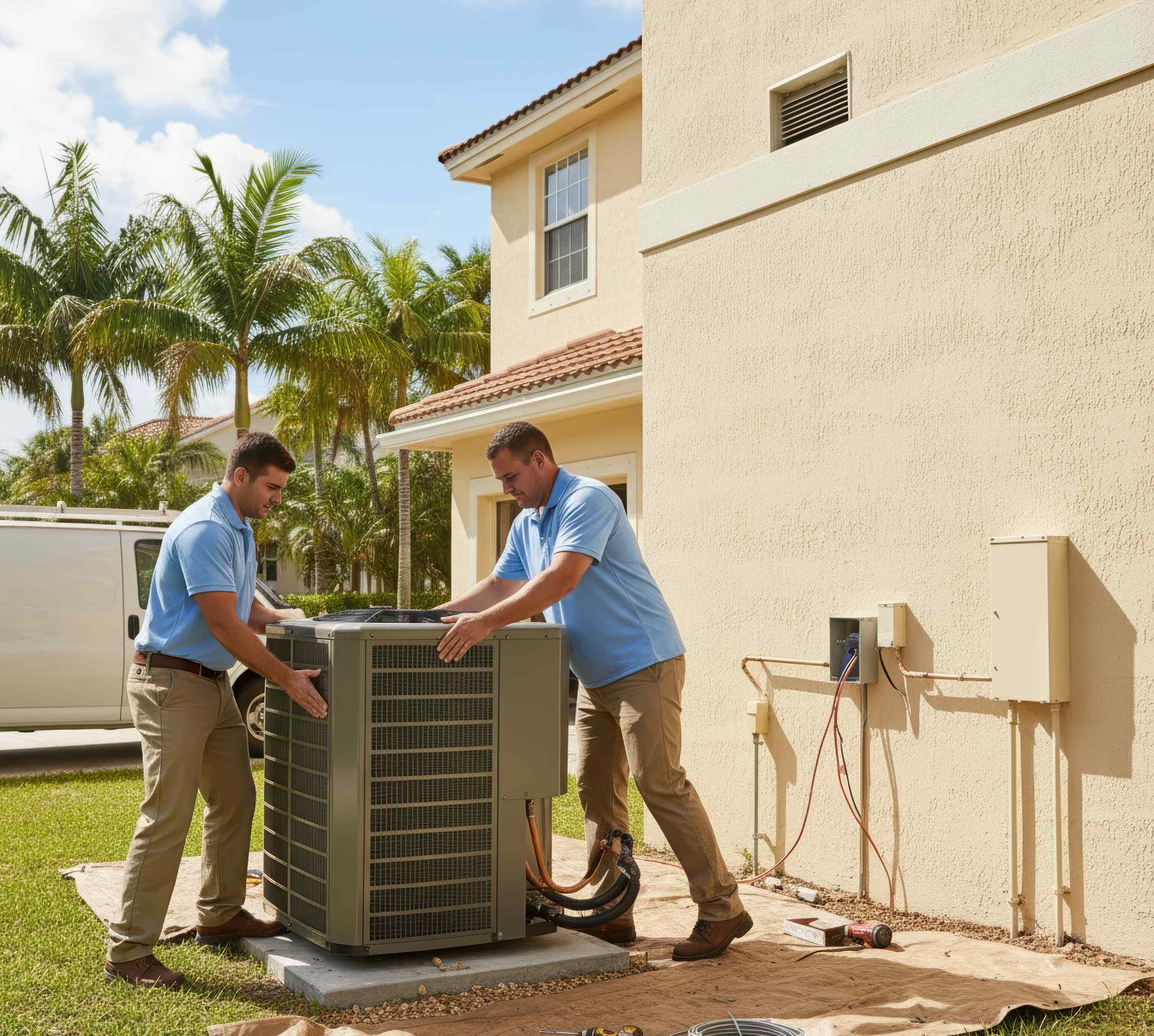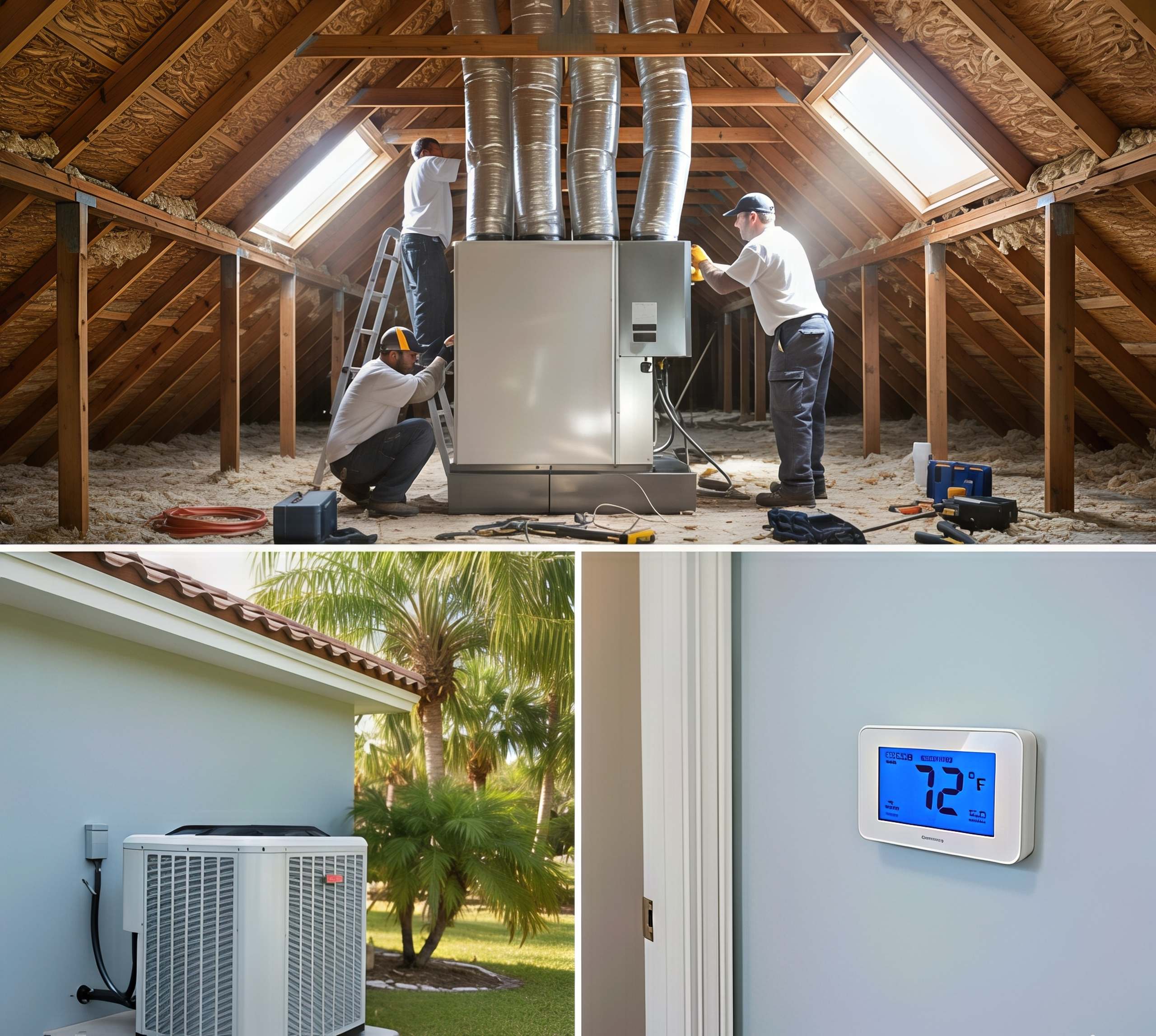Did you know that you can save money every month by upgrading to a high-efficiency air conditioner?
Air conditioning costs in Florida are high and a new unit is a major outlay for homeowners, so if you’re considering a new air conditioner or heat pump, it’s important to get the best bang for your buck!
One of the first things to check after correctly sizing your unit is the SEER (Seasonal Energy Efficiency Ratio) rating. This will affect not only the upfront cost of the unit but the ongoing HVAC running costs—how much electricity your unit uses, your monthly bills, etc.
Let’s look closer at SEER ratings and what we should look out for with HVAC efficiency. More specifically, what is a good SEER for air conditioning in Tampa or Fort Myers?
WHAT IS A SEER RATING?
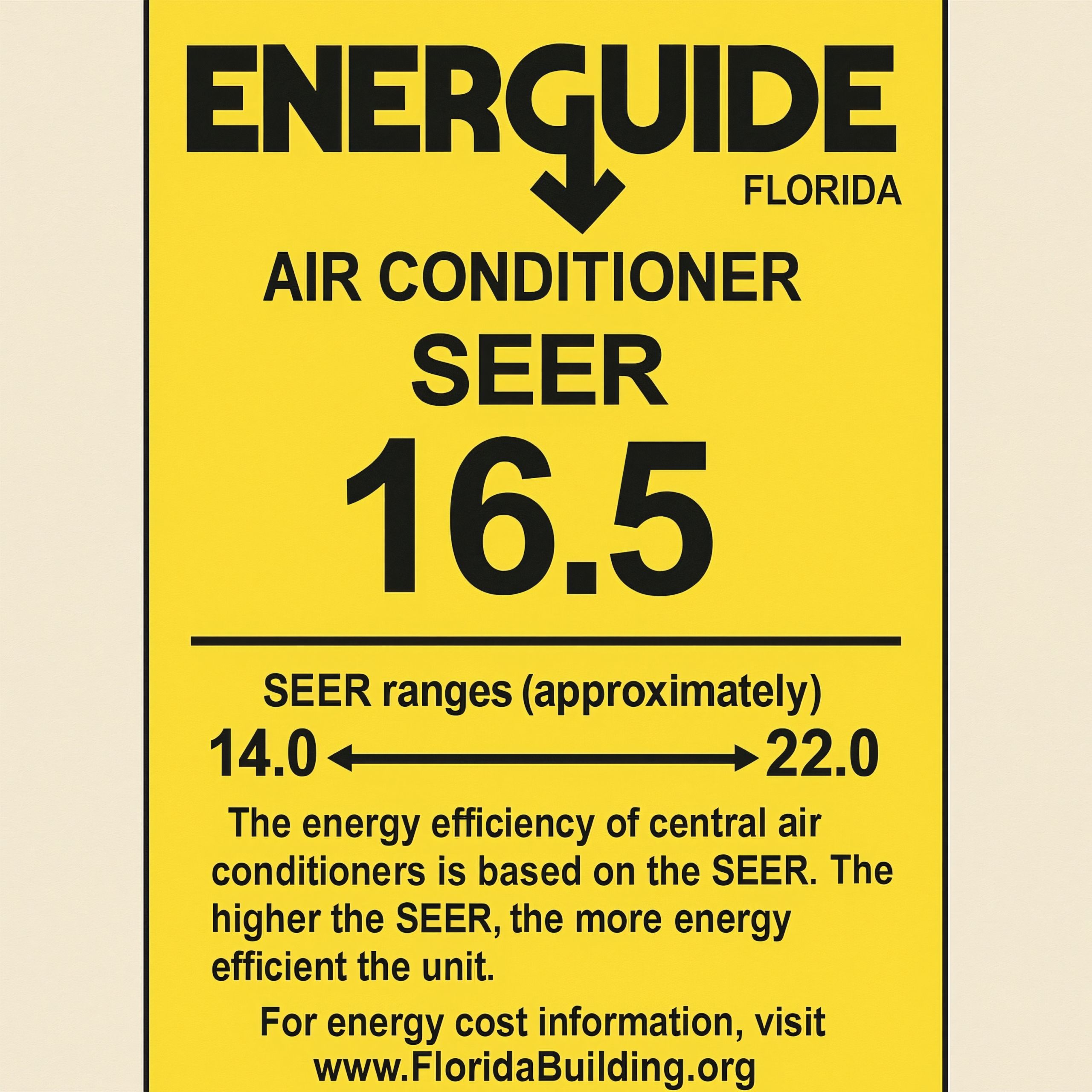
Seasonal Energy Efficiency Ratio (SEER) is a measure of cooling output to energy input expressed as a ratio, or, in other words, how efficiently an air conditioner converts electricity into cooling power. A higher SEER rating indicates a more efficient unit that will convert more electrical power into cooling the home. This means less wasted energy, lower energy usage, and lower bills.
You should see a yellow Energy Guide label attached to the exterior of the AC unit. This includes information about the unit’s SEER rating. Bear in mind, however, that the SEER rating estimates an air conditioner’s maximum possible efficiency. The unit will not always run at this maximum level, especially if regular AC maintenance is not performed.
STAY COOL ALL YEAR ROUND WITH ONE WAY AIR…
The team at One Way Air installs, services, and repairs all types of air conditioning systems in Southwest Florida. Get in touch with us here for a quote or call 239-233-4356 in emergencies.
WHY IS THE SEER RATING IMPORTANT?
Throughout a Florida summer—and beyond—air conditioning is used heavily in most households.
Because SEER measures the cooling output of an AC unit against the amount of energy it uses, understanding the unit’s SEER rating when considering a new AC installation can save you money and greatly impact your monthly energy bills.
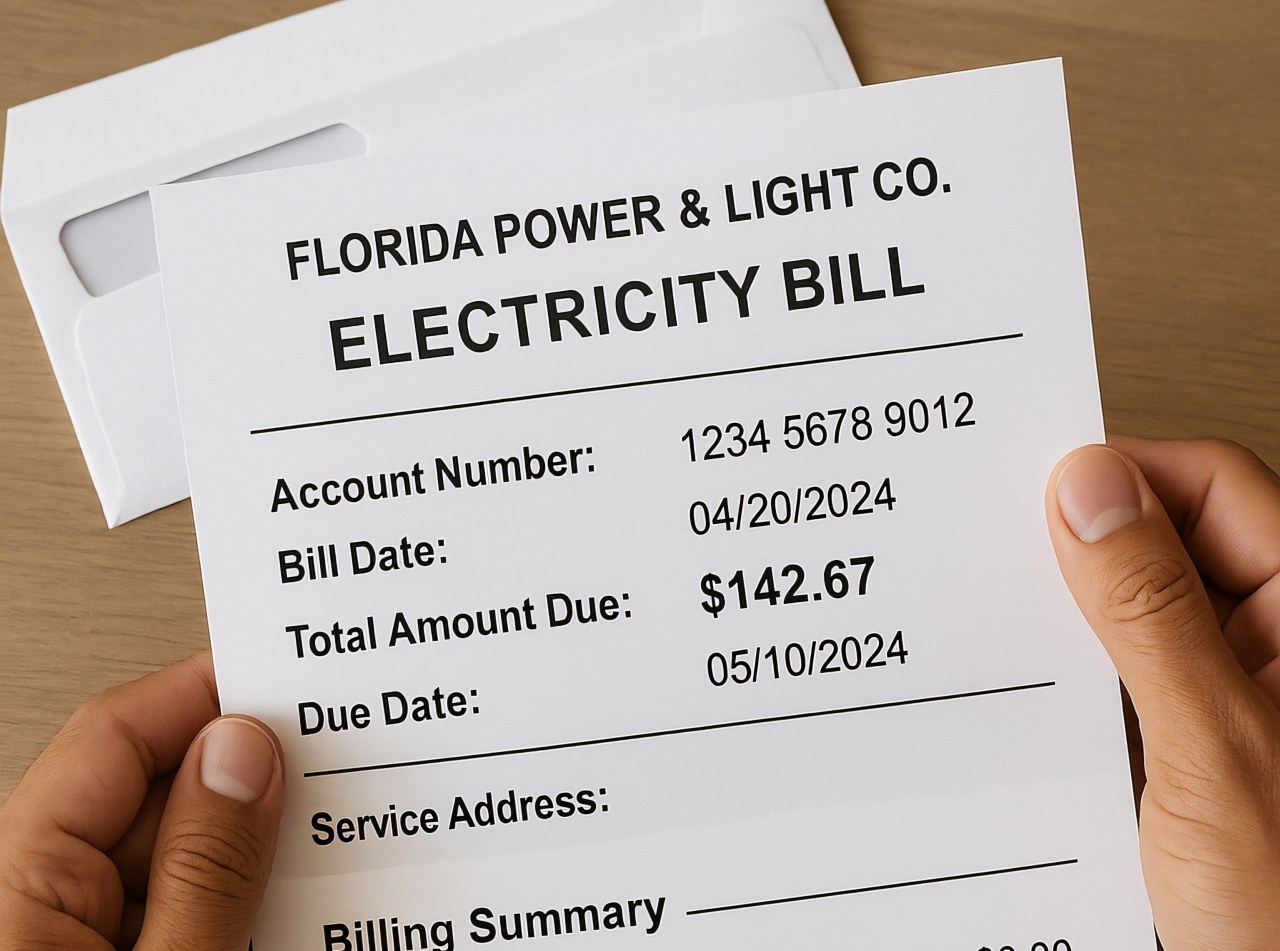
For instance, a 16 SEER air conditioning unit uses approximately 12.5 percent less electricity than a 14 SEER unit, all other factors being equal. Florida homes are, therefore, increasingly aiming higher with SEER ratings to keep ongoing bills down.
Here’s a simple way to calculate how the energy savings work with SEER ratings…
Energy Savings % = 1− (Old SEER/New SEER)
Upgrading from SEER 14 to SEER 16
1-(14/16)
= 1 – 0.875
= 0.125
= 12.5 percent
Upgrading from SEER 14 to SEER 20
1-(14/20)
= 1 – 0.7
= 0.3
= 30 percent
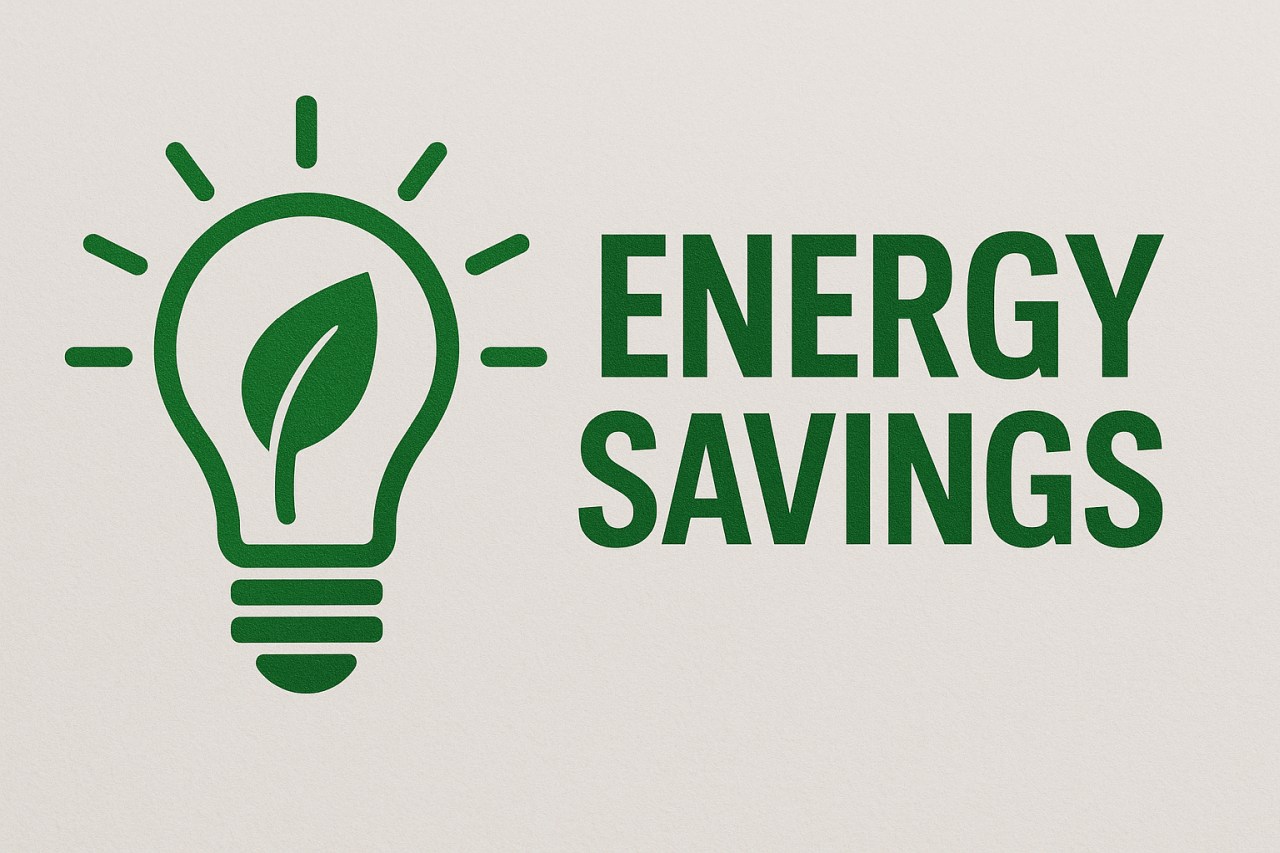
This is a very basic method of calculating energy savings according to SEER ratings but it can be affected by other factors, such as:
- Climate (hotter areas benefit more)
- System usage (more hours = more savings)
- Ductwork efficiency in central air conditioning systems
- AC installation quality
- HVAC maintenance regularity
BENEFITS OF A HIGH SEER RATING
To summarize, the main benefits of a high SEER rating are:
- Energy savings—approximately 10-12 percent in energy savings for each two SEER of efficiency.
- Better for the pocket and the environment—less wasted energy reduces bills and is more eco-friendly.
- Increased indoor comfort—higher-efficiency systems installed properly should perform to a high level all year round.
- Longer lifespans—high-quality, high-efficiency systems may last longer than cheaper, lower-quality systems, extending cost savings into the future.
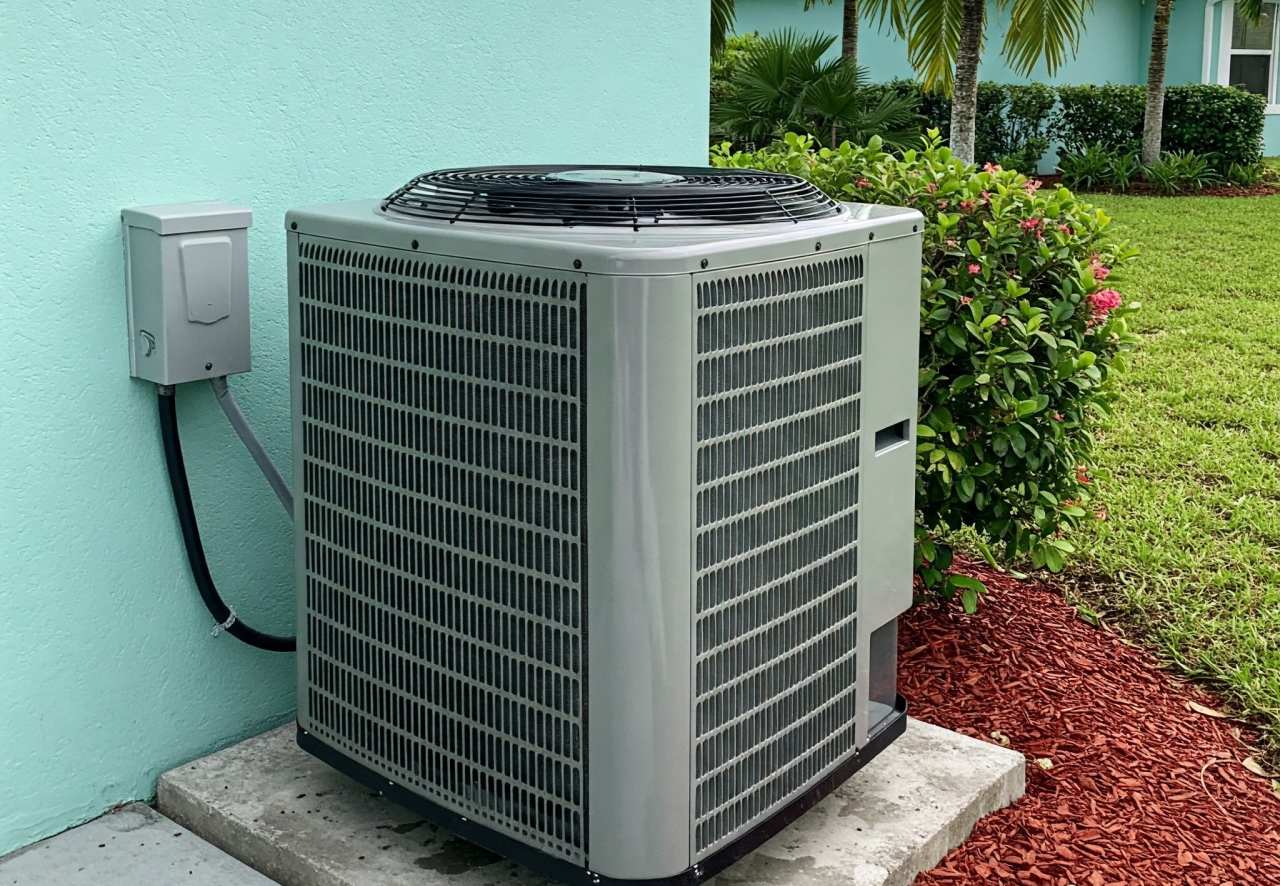
HOW MUCH MORE DO HIGH SEER RATING UNITS COST?
The focus on energy efficiency has increased in recent years. New AC units in Florida generally range from 14 to 26 SEER, while older units of 20 years or more may be rated as low as 10 SEER.
High-efficiency and lower bills sound great to most homeowners but these benefits come with higher upfront costs. Units with a higher SEER rating generally cost more than lower SEER rating models.
Here’s a brief guide to how the costs of new air conditioning systems installed in Florida vary with SEER rating:
|
TYPE OF UNIT |
TYPICAL SEER RANGE |
TYPICAL COST (INSTALLED) |
|---|---|---|
|
Standard Central AC |
14 – 18 SEER |
$4,000 – $7,000 |
|
High-Efficiency Central AC |
18 – 21 SEER |
$6,500 – $10,000 |
|
Variable-Speed/Top Models |
20 – 26+ SEER |
$10,000 – $15,000+ |
|
Mini-Split/Ductless Systems |
16 – 30+ SEER (some models) |
$3,000 – $5,000 (single zone)$6,000 – $12,000+ (2-4 zones) |
Air conditioner costs depend on other factors besides the SEER rating, such as home size and layout, ductwork modifications/replacements, the type and brand of the unit, and the installation complexity. However, understanding how the SEER rating impacts costs can help you plan budgets accordingly.

EVOLUTION OF SEER: UNDERSTANDING SEER2
You will increasingly see a “SEER2” rating on new air conditioning units sold in the U.S. This variation was introduced by the U.S. Department of Energy (DOE) to better represent real-world operating conditions for air conditioning and heat pump systems.
Without getting too technical, SEER2 uses higher static pressure in the ductwork during testing, simulating real-world conditions more accurately than the old SEER tests. This helps homeowners and contractors better understand how systems will actually perform once installed.
As a rule of thumb, SEER2 is usually about 4–7 percent lower than its SEER counterpart due to the stricter test conditions.
SEER VS. SEER2 COMPARISON TABLE
This table helps you convert SEER ratings to SEER 2 ratings:
|
Old SEER Rating |
Approx. Equivalent SEER2 Rating |
|---|---|
|
13 SEER |
~12.3 SEER2 |
|
14 SEER |
~13.4 SEER2 |
|
15 SEER |
~14.3 SEER2 |
|
16 SEER |
~15.2 SEER2 |
|
17 SEER |
~16.1 SEER2 |
|
18 SEER |
~17.0 SEER2 |
|
20 SEER |
~18.9 SEER2 |
|
22 SEER |
~20.8 SEER2 |
WHAT IS THE MINIMUM SEER RATING FOR AC IN FLORIDA?
According to the Department of Energy’s Appliance and Equipment Standards Program, the minimum SEER rating for new residential air conditioners installed after January 1, 2023, in the southeastern part of the U.S., including Florida, is as follows:
- Split-system ACs < 45,000 BTU/h: 14.3 SEER2 (15 SEER)
- Split-system ACs ≥ 45,000 BTU/h: 13.8 SEER2 (14.5 SEER)
- Single-package units: 13.4 SEER2 (14 SEER)
New units now sold in Florida are, therefore, at least 14 SEER. This move was made to enhance energy efficiency and reduce the environmental impact in the region.
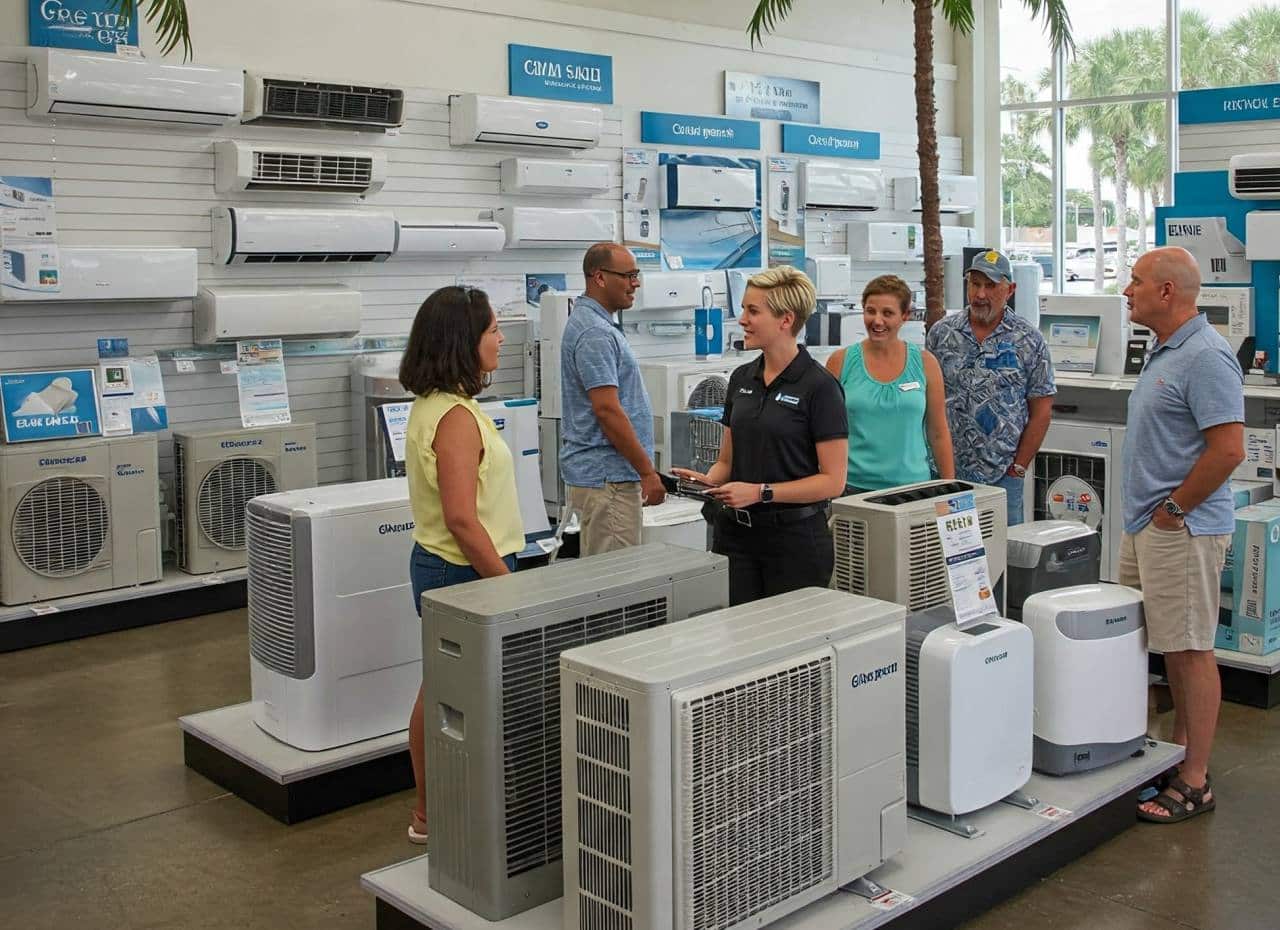
SO, WHAT IS A GOOD SEER RATING FOR YOUR HOME?
Looking beyond the regulatory requirements, homeowners should consider air conditioning units rated SEER 16 and above for significant energy savings and efficiency in the home.
Selecting the right HVAC system in your home requires balancing available budgets with the desired cooling power and efficiency. The first step is to understand the home’s cooling requirements, which usually requires professional expertise and some careful measurements involving the square footage, ceiling heights, insulation, exposure to sunlight, number of occupants, and other factors in the home.

Most Florida homes use central air conditioning units but ductless mini-split systems may suit homes without ductwork where smaller spaces or individual rooms need cooling.
Speak to your AC professional to determine your unit’s ideal size and SEER rating. Then, have it installed correctly and book proper AC maintenance regularly.
THE IMPACT OF COOLING STAGES ON SEER
Residential air conditioners are available in several different cooling system types that affect the SEER rating.
Single-stage air conditioners remain the most prevalent due to their lower upfront costs and widespread historical use. However, we have seen a growing trend toward two-stage or variable-speed systems with higher SEER ratings:
- Single-stage systems typically have the lowest efficiency (SEER 14-15) because they always run at full capacity, cycling on and off regularly.
- Two-stage systems run mainly on low settings, switching to high only when needed, reducing energy usage and with fewer start-stop cycles (Typically 16–18 SEER).
- Multi-stage systems have more than two speeds, providing even finer control over temperature, improving part-load efficiency (Typically 18–20 SEER or more).
- Variable-speed systems (inverter technology) continually adjust the compressor speed in small increments based on demand, running at low speed and high efficiency most of the time (Typically 20-25 SEER).
|
System Type |
Operation Mode |
Typical SEER |
Comfort/Efficiency |
|---|---|---|---|
|
Single-Stage |
Full power only |
13-15 |
Basic |
|
Two-Stage |
Low and High |
16-18 |
Good |
|
Multi-Stage |
3+ fixed speeds |
18-20+ |
Very good |
|
Variable-Speed |
Continuously adjusts |
20-25+ |
Excellent |
FAQs
When researching new AC units, you will likely see the BTU/h ratings of units listed. This is a measure of the cooling capacity of the unit, telling you the amount of heat an AC unit can remove from a space per hour (the higher the BTU, the more powerful the unit). SEER, on the other hand, measures the unit’s cooling efficiency.
Yes, heat pump efficiency is measured in SEER or SEER2 for cooling and HSPF2 (Heating Seasonal Performance Factor 2) ratings for heating performance.
In Florida, a 16 SEER air conditioner can qualify for a federal tax credit under the Inflation Reduction Act (IRA), provided it meets additional criteria. You can find out more here.
ENERGY STAR is a government-backed certification program (run by the EPA) that identifies energy-efficient appliances, including air conditioners and heat pumps. The ENERGY STAR label requires the unit to have a minimum SEER rating of around 16–17 (15-15.2 SEER2).
A high SEER rating can result in energy savings and lower energy bills in the long run. Whether it is worth upgrading usually depends on factors like the age and condition of your current unit. An aging unit that needs regular AC repairs should probably be replaced with a new, high SEER rating model.
Most times, if your AC is working efficiently, your family stays cool and comfortable at home, the system hums along in the background, and nobody thinks too much about AC efficiency. Strange sounds, unusual smells, a lack of cooling performance, some rooms hotter than others, high energy bills or other signs will tell you if problems need troubleshooting.
In Florida, the high heat, humidity, and airborne salt content in coastal areas put extra wear and tear on air conditioning systems. The average AC lifespan may be 5-7 years less than the usual estimated AC lifespan average of 15-20 years.
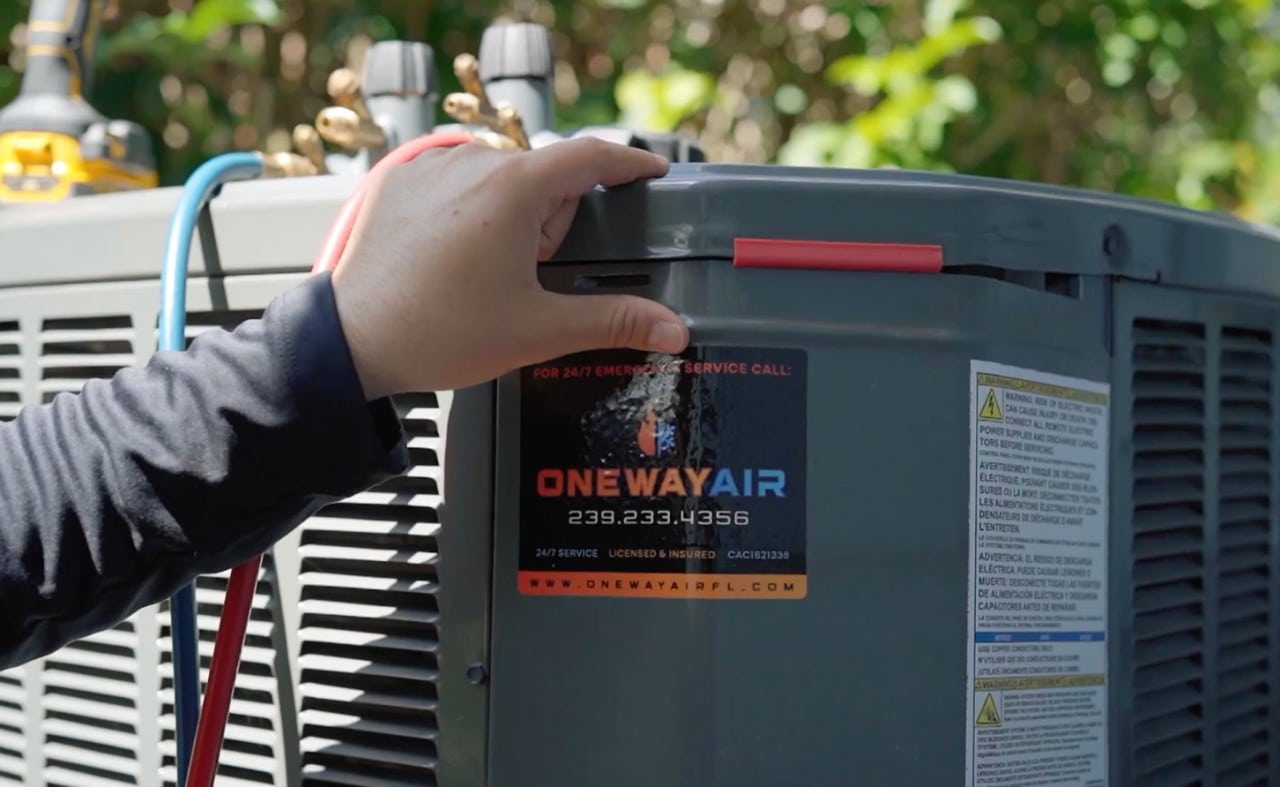
CHOOSE THE IDEAL AC FOR YOUR HOME
HVAC efficiency in Florida begins with choosing a properly sized air conditioner with a suitable SEER rating. DOE standards set the baselines but homeowners can reduce energy usage and bills further by going beyond this with a high-efficiency air conditioner.
Contact an AC professional at One Way Air for an HVAC system inspection and help with selecting the ideal AC for your home.




